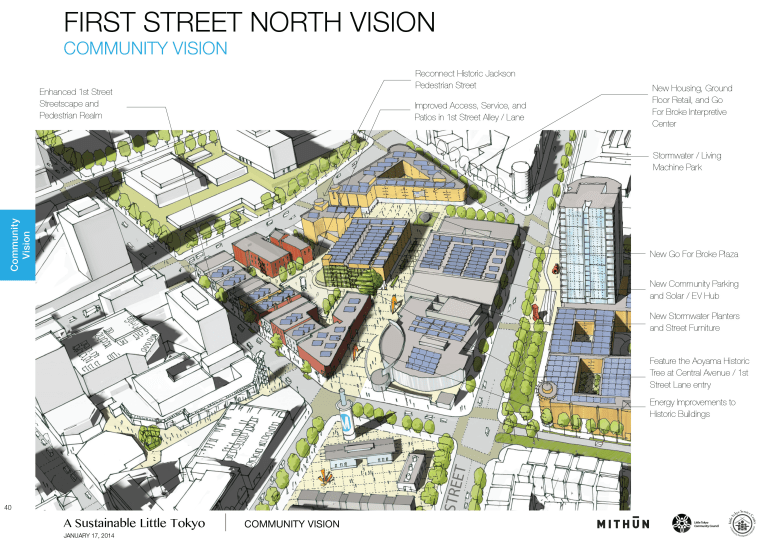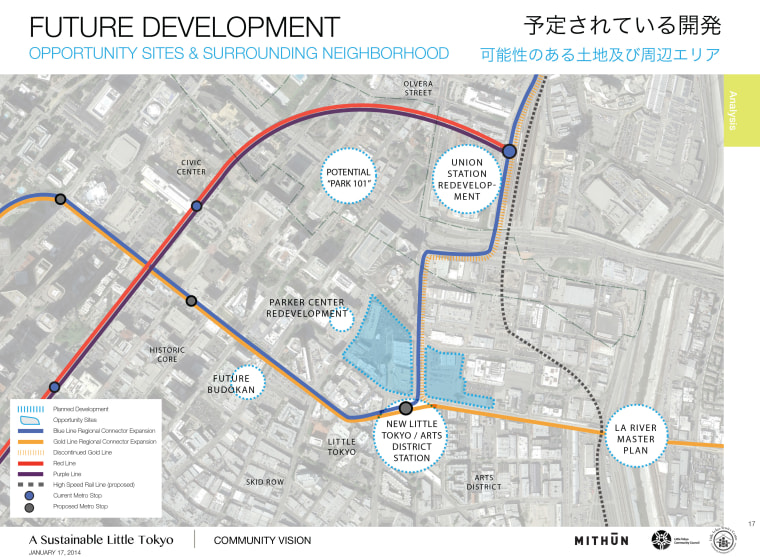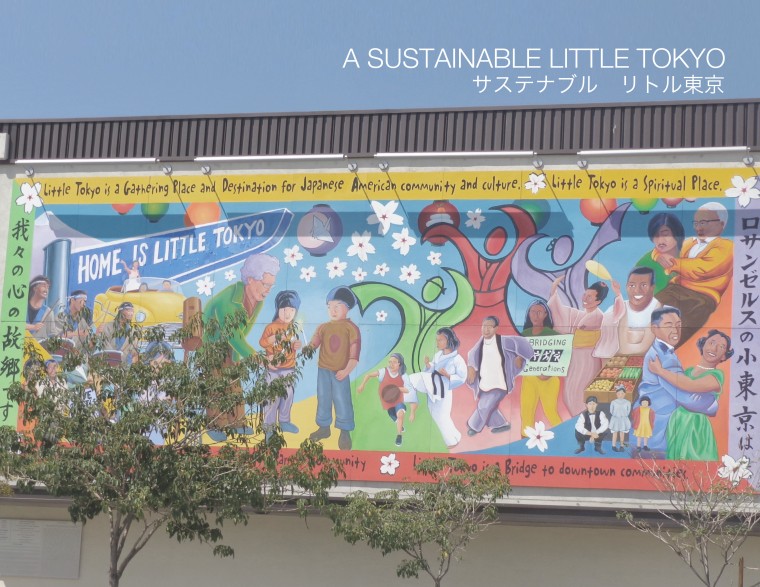Take a stroll down 1st Street in Los Angeles' Little Tokyo, and it’s not difficult to spot the signs of gentrification. Brand-new luxury condos line block after block, entire streets have been cordoned off to make way for construction on a new transit station, and storefronts where local restaurants once thrived are deserted and waiting to be snapped up.
Little Tokyo’s situation is not unique. In recent years, ethnic enclaves such as San Francisco’s Mission District, Seattle’s Chinatown-International District, and Boston's Chinatown, have been gentrified, with the very communities who have been credited for cultivating their neighborhoods finding themselves being pushed out.
“Before World War II, there were 85 Japantowns throughout the country,” Dean Matsubayashi, executive director of the Little Tokyo Service Center, told NBC News. “Now, there are four left. We feel that it is not only important to preserve Little Tokyo, but to ensure that it continues thriving.”
RELATED: Boston's Chinatown Sees Declining Asian Population as Cost of Living Grows
In an effort to prevent further displacement and protect the 130-year-old neighborhood, community leaders have created a program that would direct changes in a way that would benefit those who call Little Tokyo home.
Launched in 2012, Sustainable Little Tokyo is a community plan to transform the neighborhood into an eco-friendly, small business-driven district with the larger goal of protecting the community’s strong sense of history and culture.

The project is supported by a coalition of over 100 organizations, including the Little Tokyo Service Center, Little Tokyo Community Council, and Japanese American Cultural Community Center (JACCC) and proposes development plans that they hope to make reality once they’ve secured enough investors.
The plan includes redesigns of three areas in Little Tokyo, including the future location of the Regional Connector station, an extension of transit lines that has been under construction since 2014. Once completed in 2020, Little Tokyo will be the second busiest station in LA County, according to city traffic projections, generating foot traffic that Little Tokyo Service Center hopes will bring more business to struggling local restaurants and shops.

The redesigns proposes green elements that the whole neighborhood can share, like a district energy grid, a stormwater bank, and solar panels to be placed on rooftops. The plan also creates new retail spaces, provides bike facilities and electrical vehicle charging stations to reduce car usage over time, and 170 new units of affordable housing.
"Since early 2000, there have been over 1800 new units built in Little Tokyo and only 24 units have been affordable; everything else is the luxury market rate," Matsubayashi said. "On the commercial side, you have businesses that were paying $1.85 a square foot, and now development is charging $6.50 a square foot. We can't have people making money at the expense of our livelihood. With this plan, we can achieve a happy medium."
A priority of Sustainable Little Tokyo is for the plan to be a community-driven process. Little Tokyo Community Council, one of the organizations backing the plan, is a network of over 90 stakeholders from nonprofit organizations to local churches and temples.
When the project was first announced, Matsubayashi noticed stakeholder indifference toward environmentalism. To galvanize the community, those behind the project decided to root Sustainable Little Tokyo under the tenets of mottainai, a Buddhist, Japanese term that roughly translates to “don’t be wasteful.” It also expands on the idea of reduce, reuse, recycle by adding a fourth element: respect.
“A lot of us Japanese Americans were told by our parents how they were raised on mere grains of rice while growing up,” Matsubayashi said. “Being able to talk about work through these cultural terms that people can connect with really helps push the conversation in a productive way.”
Sustainable Little Tokyo has already partnered with various organizations to practice mottainai, holding community events like Historic Grapefruit Night, where individuals could purchase grapefruit cocktails from Little Tokyo bar Wolf & Crane to honor the 150-year-old grapefruit tree that stands in the JACCC plaza and is a symbol of the neighborhood’s resilience.
Little Tokyo Service Center is also on its final phase of a capital campaign that will realize its longtime dream of building a multi-purpose recreational facility. Named the Budokan of Los Angeles after the famous indoor arena in Tokyo, the center will have two regulation basketball courts, a rooftop garden park, and rooms that organizations can rent out for meetings and events.
“One of the key vehicles to connecting the Japanese American community in Southern California is through sports,” Matsubayashi said. “Thousands of Japanese American youth participate in basketball leagues. It’s a way to bring families and young folks back to Little Tokyo: to cultivate community on and off the courts.”
The Budokan will also host kendo, judo, and karate tournaments. Currently 80 percent complete with its fundraising, Little Tokyo Service Center plans on breaking ground on the Budokan in early 2017.
As a community that has flourished despite historic obstacles such as the Immigration Act of 1924 and the incarceration of Japanese Americans during WWII, Matsubayashi is confident Little Tokyo can weather the negative effects of gentrification.
“People think they’ve discovered this new land, a new playground, but these neighborhoods are over 100 years old — they already have a deep sense of history and longtime residents,” Mastubayashi said. “We’re not opposed to new folks coming in, but we want them to recognize the history of the neighborhood they’re stepping into. All we ask is for folks to take their shoes off at the door.”
Follow NBC Asian America on Facebook, Twitter, Instagram, and Tumblr.
